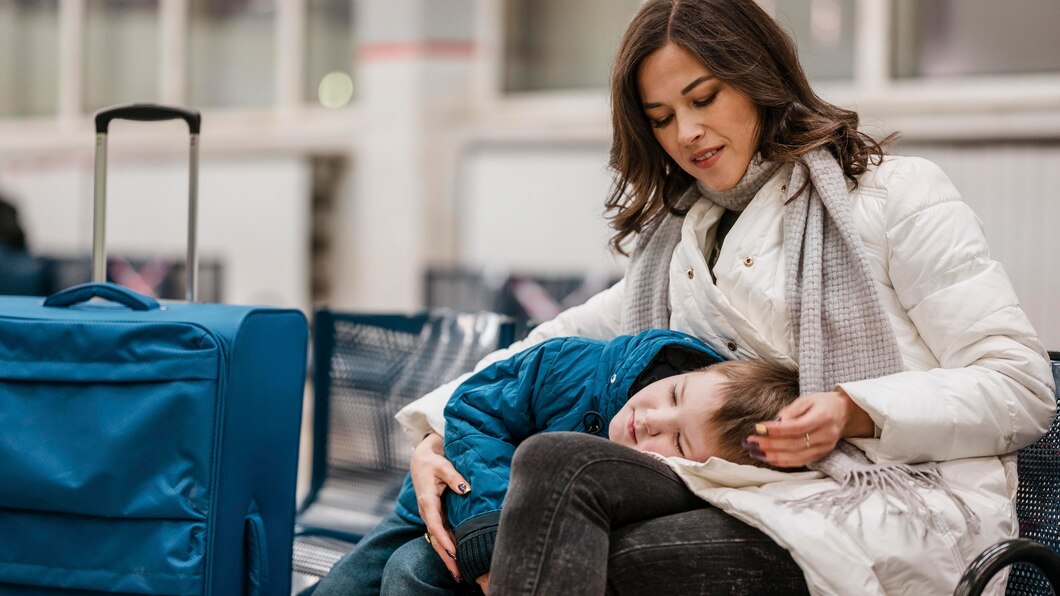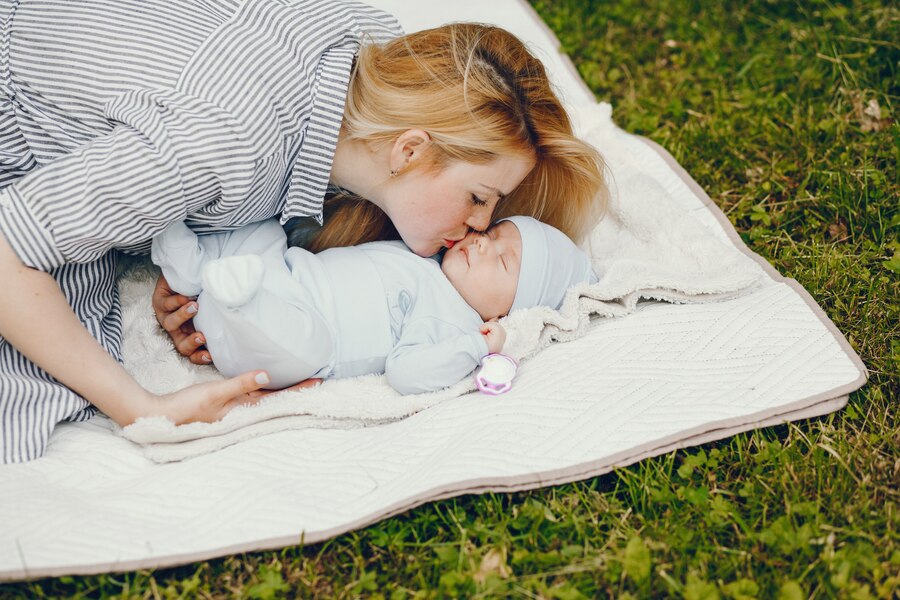
How To Get A Baby To Sleep On Vacation
Traveling with a baby can be both thrilling and daunting for parents. The anticipation of exploring new places and creating beautiful memories as a family is exciting. However, amidst the excitement, ensuring a baby’s sleep during vacation becomes a crucial factor for their well-being and a harmonious trip.
As parents, we understand that a well-rested baby is more likely to enjoy the adventure, and it also contributes to a smoother travel experience. In this guide, we will explore strategies to tackle the challenges of traveling with a baby while prioritizing their sleep to make the most of our vacation together.
Importance Of Ensuring A Baby’s Sleep During Vacation
A well-rested baby is essential for their overall health and well-being, especially during vacation. At the same time, adequate sleep helps babies stay alert, happy, and engaged. Consequently, it will make the trip more enjoyable for both the child and the parents.
Babies who get enough sleep are less likely to be fussy or irritable. Thus it becomes easier for parents to navigate the vacation without unnecessary stress.
Preparing For The Trip And Creating A Soothing Sleep Environment
Packing Familiar Sleep Items: Bringing along items that remind the baby of their home sleep environment can be comforting. Familiar blankets, stuffed animals, or a favorite sleep sack can help establish a sense of security in an unfamiliar place.
Choosing Accommodations Wisely: When selecting accommodations, consider factors that contribute to a soothing sleep environment. Opt for a quiet and peaceful location away from noisy areas, ensuring the baby won’t be disturbed during naps or bedtime.
Creating a Comfortable Sleep Space: Set up a dedicated sleep area for the baby, whether it’s a portable crib or a separate corner with a cozy crib sheet. Darkening curtains or blinds can also help block out excess light during nap times and nighttime.
Adjusting To The New Environment
Allowing Time For The Baby To Acclimate To New Surroundings
Be Patient and Flexible: Babies may take some time to fit into the environment, so be patient and understanding during the initial days of the trip. Keep in mind that changes in routine and surroundings can affect their sleep patterns.
The Transition: Plan the vacation to allow for a natural transition to the new environment. Arriving a day or two before significant activities or events can give the baby time to adapt to the surroundings.
Establishing A Calming Bedtime Routine In The Vacation Setting
Consistency is Key: Stick yourself to a bedtime routine consistently, even during vacation. Familiar customs and practices such as a warm and soothing bath, reading a story at bedtime, or gentle rocking can signal to the baby that it’s the right time to prepare for sleep.
Mind the Timing: Keep in mind the time zone differences and try to maintain a bedtime schedule that aligns with the baby’s usual sleep routine as much as possible.
Soothing Activities: Engage in calming activities before bedtime to help the baby relax. Soft music, dim lighting, or gentle white noise can create a serene atmosphere conducive to sleep.
Maintaining A Consistent Sleep Schedule
Another important aspect to consider while discussing the baby’s sleep is the maintenance of a consistent sleep schedule.
Trying To Stick To The Baby’s Regular Sleep Times
Prioritizing Sleep: Despite the excitement of vacation, prioritize your baby’s sleep needs. If possible, try to maintain the same sleep schedule as at home, including nap times and bedtime.
Communicating with Travel Companions: Inform your travel companions about the importance of sticking to the baby’s sleep schedule. By having their understanding and support, you can create an environment conducive to your baby’s sleep needs.
Being Flexible With Naptimes And Bedtime To Accommodate Vacation Activities
During vacation, you’ll likely have a busy itinerary with places to visit, attractions to explore, and new experiences to enjoy. It’s natural for your baby’s sleep routine to break or disrupt during this time, as they may be exposed to new environments, time zones, and stimuli. While consistency in sleep is essential for babies, it’s equally important to strike a balance between adhering to their usual sleep schedule and allowing them to be part of the vacation experience.
When planning your daily activities, try to work around your baby’s nap times and be prepared to adjust as needed. If your baby usually naps in the morning, consider scheduling sightseeing or outdoor activities in the afternoon when they are likely to be more alert and awake.
Similarly, if your baby is a better napper on the go, take advantage of stroller naps during walks or visits to museums.
Handling Sleep Disruptions
Being Prepared For Potential Disruptions, Like Time Zone Changes
Plan Around Sleep: Schedule vacation activities and outings to work around the baby’s sleep times. This ensures that the baby is well-rested and ready to enjoy the adventures during waking hours.
Embracing Shorter Naps: Understand that vacation schedules may not always align perfectly with your baby’s regular nap times. Be open to shorter, on-the-go naps and compensate with an earlier bedtime if needed.
Offering Comfort And Reassurance During Night Awakenings
Comforting Routines: If the baby wakes up during the night, offer comforting routines similar to those at home. Gentle cuddling, soft words, or a favorite sleep item can help soothe them back to sleep.
Avoiding Overstimulation: During nighttime awakenings, keep the environment calm and peaceful. Minimize noise and avoid engaging in stimulating activities that may disrupt their sleep.
Safety Precautions
Ensuring A Safe Sleep Environment In Temporary Accommodations
Baby-Proofing the Sleep Space: Assess the temporary sleeping area for any potential hazards. Remove items like cords, loose bedding, or small objects that could pose a safety risk.
Using Approved Sleep Equipment: Utilize safe and suitable sleep equipment, such as a portable crib or travel-approved bassinet, to ensure your baby’s safety during sleep.
Utilizing a Sleep Sack: Consider using a sleep sack as a safe and convenient sleep solution for your baby in temporary settings. A sleep sack eliminates the need for loose blankets, reducing the risk of suffocation and entanglement during sleep.
Monitoring The Baby Closely In Unfamiliar Surroundings
Keeping the Baby Close: During sleep, keep your baby’s sleeping area close to you. If using a separate crib, ensure it is placed nearby so that you can monitor the baby easily.
Listening for Cues: Pay attention to your baby’s cues and needs during sleep. Being attentive to their comfort and well-being will help you respond promptly to any issues that arise.
Coordinating With Travel Companions
Communicating About The Baby’s Sleep Needs
Openly Discussing Sleep Schedule: Initiate a conversation with your travel companions about your baby’s sleep schedule, including nap times and bedtime. Keeping everyone informed will help plan activities that work well with the baby’s sleep routine.
read Also:
Already have an account?
Sign In
Create your account
User added successfully. Log in









